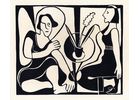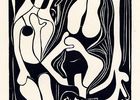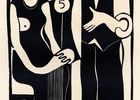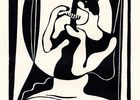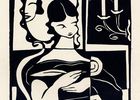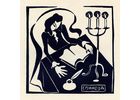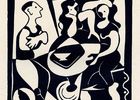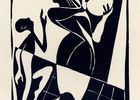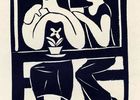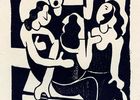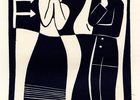
Painter,
graphic artist.
Lapin
was born into a rich merchant’s family. In 1917 he finished school (Russian gymnasium) in Moscow. He did not receive
any formal artistic education. After the revolution he moved to Leningrad,
worked as a child minder at an orphanage, an engineer at a wire and cable works.
In the 1920s he went to work for the Institute of the History of Arts. His
work included showing slides during lectures on the theory and history of art,
in this way he was assistant to many outstanding art critics of the 1920s – Nikolay
Punin, Ernst Lipgart, Nikolay Radlov, and for two years – to Kasimir Malevich. It
was at that time that Lapin got seriously interested in drawing and started
taking lessons from Nikolay Radlov, who advised him to go to evening classes at
the Academy of Fine Arts. He was friends with Kasimir Malevich and admired his
talent. He was a connoisseur of contemporary West-European artists, was part of
Leningrad’s artistic life, was friends with Nikolay Suetin, Anna Leporskaya,
Nikolay Punin, and Anna Akhmatova. He drew a lot with pencil, pen, and charcoal,
worked in pastel and watercolour. In the 1930s, he fell for linoleum engraving and
created a series which stylistically is close to art deco.
During
the Second World War he was evacuated to the Urals. Almost all his works
were lost during the blockade of Leningrad, only those survived which his wife T.N.
Krechtova had temporarily put into the custody of the Russian Museum and those
which he had taken with him when evacuated to the Urals.

